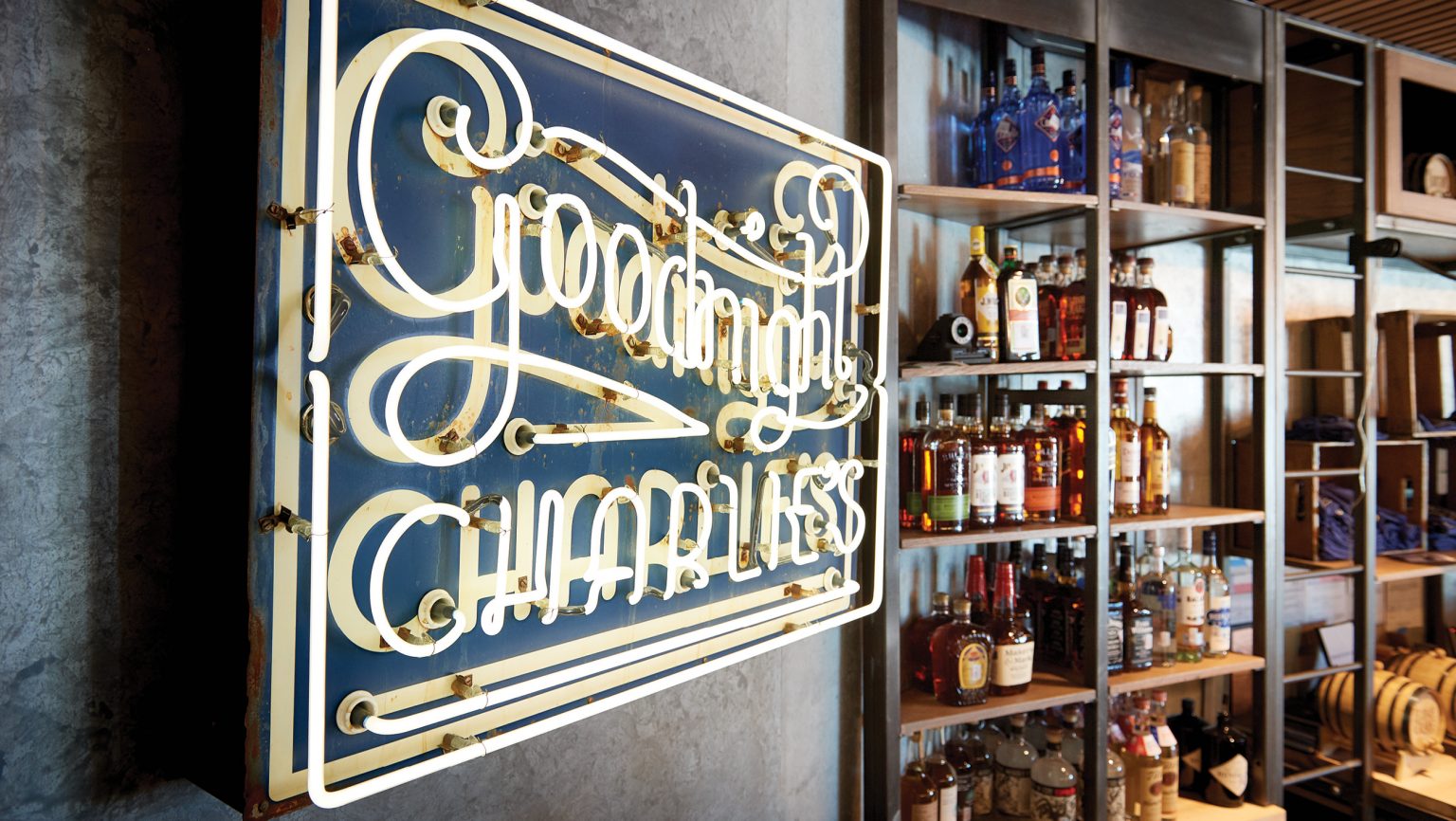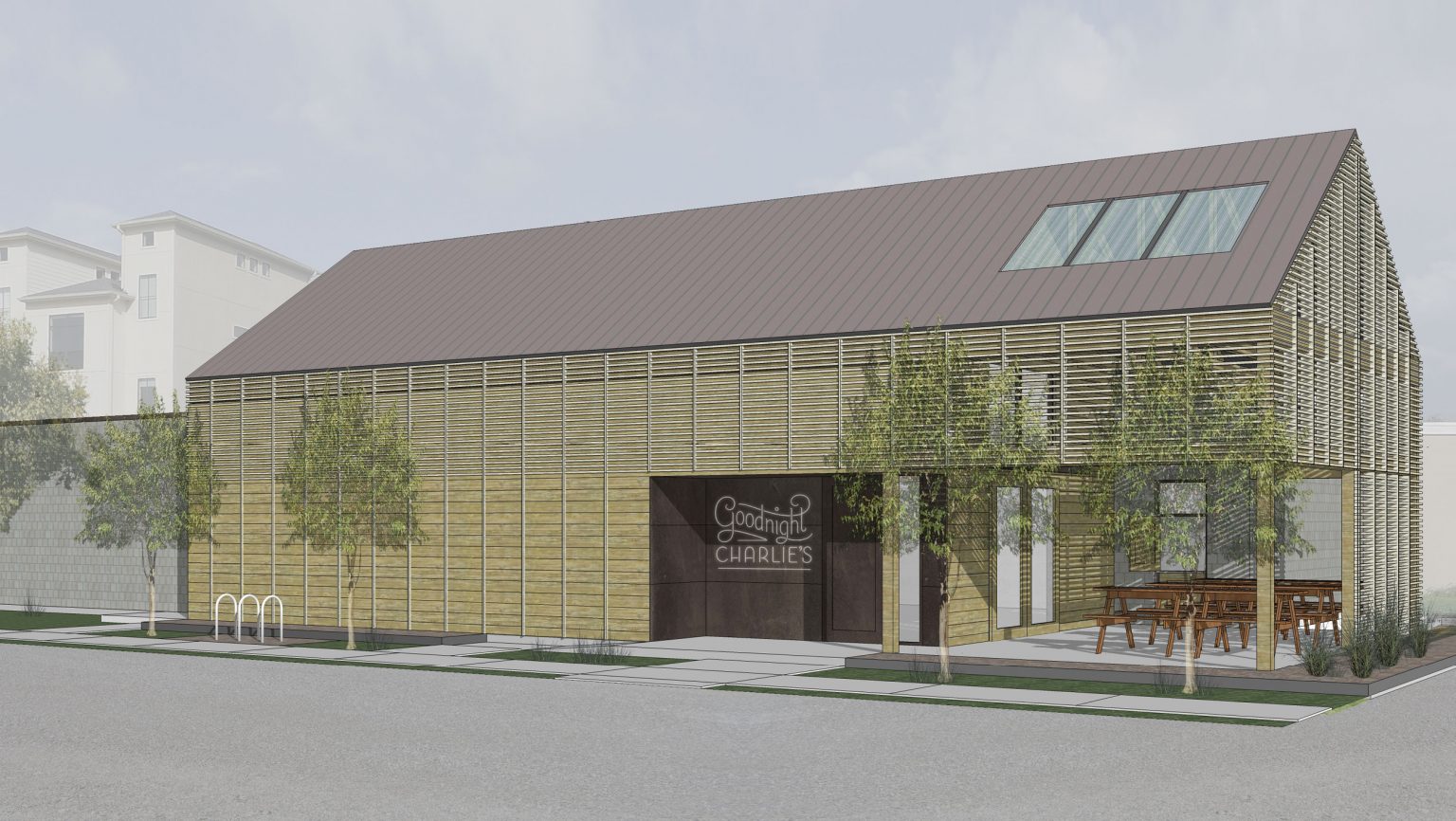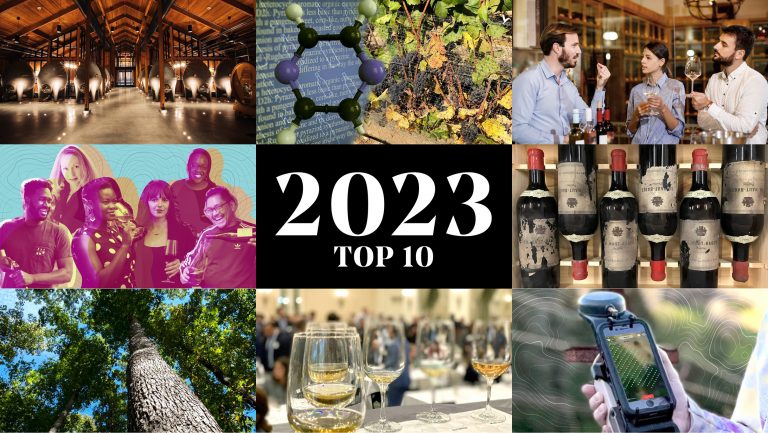Master Sommelier David Keck has an affinity for country music. He was raised in Vermont, where he spent many nights square dancing to the sounds of fiddlers. He learned how to two-step at Crider’s Rodeo & Dance Hall in Hunt, Texas, and has long listened to Willie Nelson and Merle Haggard. On moving West in 2008, he realized the Texas honky-tonk was a Lone Star version of those convivial New England square-dance halls of yore. When Keck, who made a name for himself at the Houston wine bar Camerata at Paulie’s and as the beverage director of the upscale Texas-based Japanese restaurant chain Uchi, decided it was time to create a new joint, the laid-back, feel-good atmosphere of those dance halls was at the top of his mind.
A nod to cattle rancher and “Father of the Texas Panhandle” Charles Goodnight, Keck and his partner Peter McCarthy’s bar, restaurant, and performance venue Goodnight Charlie’s—the first of several projects the duo has planned—opened last winter in an old Montrose strip mall anchored by a Buffalo Exchange. Keck and McCarthy had hoped for a soft opening to ease staff into the groove, but construction delays interfered with that plan. A band was booked for December 22, so the team was rushed into prime time without the advance prep. On Goodnight Charlie’s first evening in business, Keck says, there was a “line three deep [to order drinks at the bar] and people dancing.”
Working in such a casual environment represents a turning point for Keck. A former opera singer who became a sommelier after falling in love with wine while traveling, Keck no longer compiles extensive wine lists. He upholds the same standards of hospitality in this new setting, however, and relishes the refreshing, playful menu it has generated.

Don’t miss the latest drinks industry news and insights. Sign up for our award-winning newsletters and get insider intel, resources, and trends delivered to your inbox every week.
Choosing the Menu and the Music
Keck’s drinks menu at Goodnight Charlie’s features just three wines—all Texan. There are two rotating selections on tap, a red and a white—currently McPherson Cellars Les Copains Red and Duchman Family Winery’s Vermentino. There’s also a June’s Rosé sparkler from Austin restaurant June’s All Day, made with Austrian winemaker Markus Huber. Finally, there’s the off-menu Rhinestone Cowboy special, a clever pairing of Champagne—a bottle of Bollinger Grande Année or perhaps a Camille Savès Cuvée Anaïs, depending on what’s on rotation—with a dozen tacos.
Spirits—whiskeys, in particular—abound at the bar. Keck points out that though there are larger collections of bourbon and Scotch in the city, the 50 or so offerings at Goodnight Charlie’s encourage locals to come by for a taste. “We are moving a lot [of whiskey],” he says.
Cocktails are on the simple end of the mixology spectrum. The Fool’s Errand, for example, is made with four ingredients: Tito’s Vodka, fresh fruit, citrus, and soda; the Horse’s Neck features an Elijah Craig bourbon topped off with house-made ginger beer; and the Ranch Water is made with Espolòn Tequila, lime, and Topo Chico. They aren’t shaken or stirred but merely built directly in the glass. “If you’re in a bar with a band playing—and in the middle of service—it’s hard to have a bunch of bartenders shaking too,” says Keck. “This isn’t the kind of place where customers want to wait around 10 minutes for a drink to be made. There are so many [of those] great cocktail bars in Houston, like Anvil, we don’t need to do it here.”
Offering food at Goodnight Charlie’s was an important consideration for Keck, both for his clientele’s benefit and his own. “In any bar situation, having food is healthier—and [it] keeps people in your bar longer,” he says, adding, “Being in this industry as long as I have, I know what it’s like getting off work and not having anything decent to eat, only a Whataburger.”
Keck tapped his former Camerata colleague Felipe Riccio to conceptualize the cuisine at Goodnight Charlie’s. The menu features Riccio’s wholesome take on regionally inspired dishes like chicken mole verde tacos and refried bean-jalapeño-queso rice croquetas. “We wanted to accommodate our colleagues who are getting off work late and seeking food that’s made well,” explains Riccio. “We use great ingredients while keeping it at an affordable price point. We … wanted this to be the place where you know you’re getting tortillas made fresh in the kitchen every day.”
Easy-drinking cocktails and platters of puffed wheat duros by themselves make Goodnight Charlie’s a sought-after destination, but music is a major component of the honky-tonk’s allure. Bands are booked by David Wrangler, the founder of the Houston country DJ collective Vinyl Ranch. He curates a live program that shuns pop radio for traditional country music in the style of artists like Waylon Jennings, George Strait, Loretta Lynn, and Dwight Yoakam. “This was our recipe: Classic, undeniable, honest,” says Wrangler. “Every regional act we’re booking shares the same ethos.” He adds that the majority of bands he books are writing and performing country music “the way it was done by the pioneers, but bending it ever so slightly.”
Designing the Space
“I knew I wanted something classic that felt like a honky-tonk,” says Keck. “But how do you do that with a completely brand-new building? Most honky-tonks in Texas are in crazy old ones that have a musty, lived-in feel.”
Working with the Houston-based firm Content Architecture, the designer Gin Braverman of Gin Design Group, and McCarthy’s wife, Bailey, another designer, Keck’s vision for a modern-day honky-tonk was realized. Bailey says that Goodnight Charlie’s symbolizes the evolution of the honky-tonk and is “showing its relevance today as more than a nostalgic homage to a bygone era.” Clean lines, unadorned surfaces, and natural materials were all employed. “But mostly we tried to keep in mind—as one of our bartenders reminded us—[that] places like Crider’s, Gruene Hall, and Houston’s own Blanco’s were new once too, and accumulated their ephemera and character over time,” she says. “We want to earn our history and place in the honky-tonk story.”
Wood, leather, and galvanized aluminum were used in unexpected ways throughout the space. Sheets of metal usually used to cover the sides of barns line the interior walls at Goodnight Charlie’s, and wood slats above the bar and behind the stage double as functional elements, helping with the acoustics. There was worry the aesthetic was leaning too fancy, Bailey remembers, but she encouraged this direction. “They’re grinding corn and making tortillas from scratch every night for tacos,” she says. “Why wouldn’t their space deserve that same level of care?” Ultimately, she says, it’s about how you treat people, and the Goodnight Charlie’s team “knows how to throw a great party” and make everyone feel at home.
Goodnight Charlie’s isn’t an old-school honky-tonk, but Keck says it’s an opportunity to expand a distinct yet fading slice of cultural life. “We’ve got the 85-year-olds on the floor, people who grew up two-stepping 50 years ago, dancing beautifully,” he says, “and hipsters trying to figure it out. There’s nothing exclusionary about anything we’re doing. It’s just super fun.”

Dispatch
Sign up for our award-winning newsletter
Don’t miss the latest drinks industry news and insights—delivered to your inbox every week.
Alia Akkam is a writer who covers food, drink, travel, and design. She is the author of Behind the Bar: 50 Cocktails from the World’s Most Iconic Hotels (Hardie Grant) and her work has appeared in Architecturaldigest.com, Dwell.com, Penta, Vogue.com, BBC, Playboy, and Taste, among others, and she is a former editor at Edible Queens, Hospitality Design, and Beverage Media. A native New Yorker, Alia now calls Budapest home. Follow Alia @behdria.














